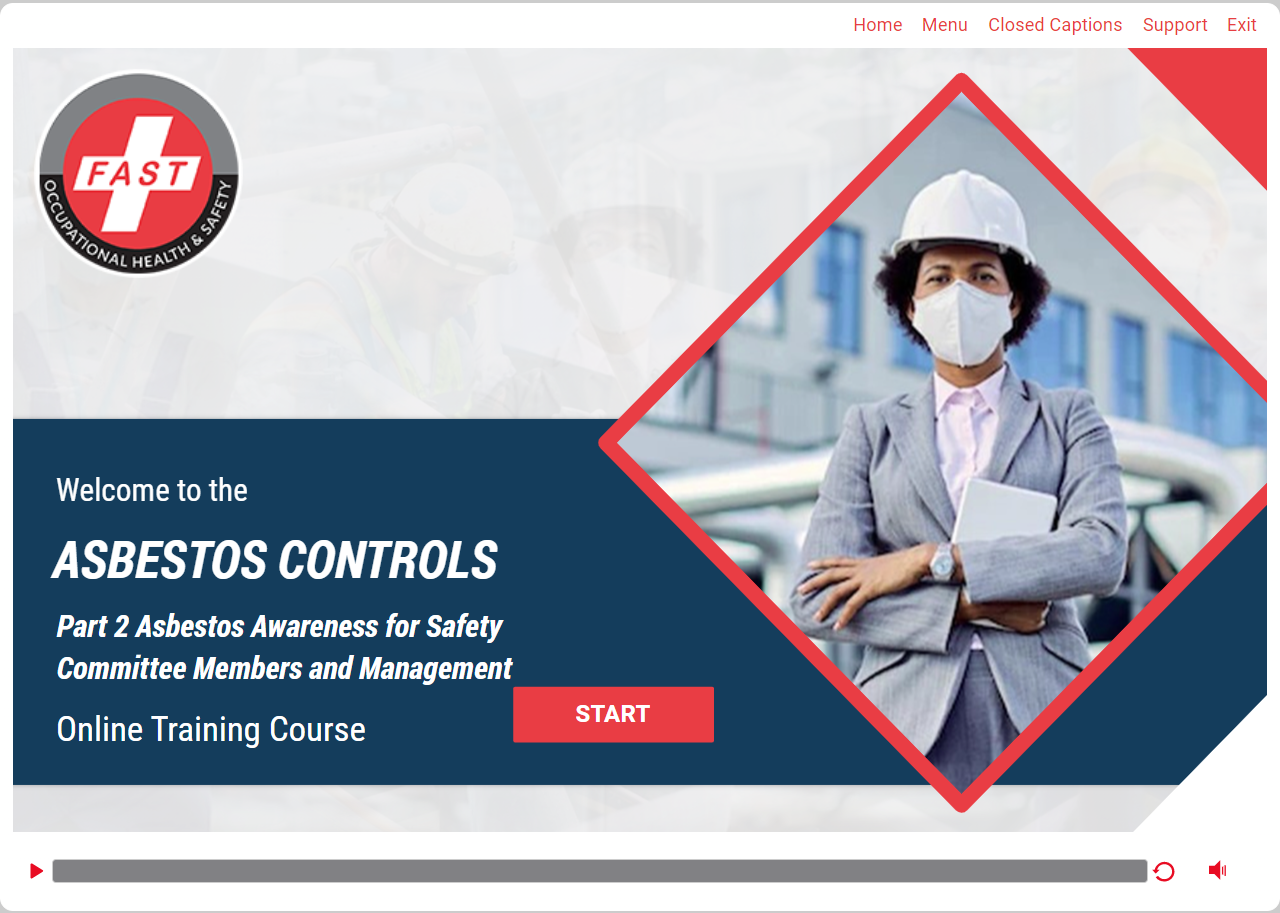
Asbestos Controls Online Training Course
(E-SACA-E)
Introduction to Asbestos Controls Online Training Course
Occupational Health and Safety (OHS) – Asbestos Awareness Training Online Course
The module adheres to AODA compliance and presents its content through a narrative format, supplemented by relevant images. Each chapter provides an overview of the asbestos controls training program.
A key advantage of this module is its flexibility, allowing learners to pause the course at any time. The system automatically bookmarks the progress, enabling the learners to resume from where they left off.
Upon completion of the module, a final test in the form of multiple-choice questions or choose the correct answer is administered to assess the learners’ understanding.
ASBESTOS AWARENESS TRAINING COURSE OUTLINE
The course covers the following topics:
1. DEFINITIONS
In this chapter, learn the precise definitions of the following:
1. Asbestos
2. Friable Asbestos
3. Dust
2. TYPES OF CONTROLS
There are 3 main types of controls that are as follows:
1. Elimination
2. Encapsulation
3. Negative Air Filtration
3. ELIMINATION
Elimination refers to educating individuals about methods to reduce or eradicate the presence of asbestos in a given environment. In this chapter, you will learn about elimination, which has been described briefly to provide learners with a quick understanding of the elimination type of workplace control.
4. ENCAPSULATION
Encapsulation refers to a technique used in asbestos abatement, involving the application of a protective coating or sealant on asbestos-containing materials. Learn the benefits and drawbacks of the encapsulation that has been mentioned in an easy-to-understand manner.
5. NEGATIVE AIR FILTRATION
Negative air filtration involves creating controlled environments using specialized equipment to prevent the release of asbestos fibers beyond the work area. In this chapter, learn about the negative air filtration that requires one or more exhaust units, a fan and series of filters.
6. ASBESTOS SAFE PRACTICES
Asbestos safe practices aim to reduce the risk of asbestos exposure when working with materials containing asbestos. In this chapter, you will learn the asbestos safe practices or proper precautions that are necessary to avoid danger in the workplace.
7. MANAGER DUTIES
This chapter describes the manager’s duties, such as training employees, performing an investigation, conducting a workplace inspection, etc., in an easy-to-comprehend manner.
8. SAFETY COMMITTEE’S DUTIES
The chapter ensures monthly inspection and include all duties such as reporting accidental damage immediately, danger asbestos, etc.
9. FINAL TEST
After going through the module, learners have to attempt the final test to ensure successful completion of the training. The final test will be in the form of choosing the correct answer or multiple choice questions (MCQs) to gauge learners’ understanding.
- Asbestos Controls
- Download Certificate
Student Reviews
Feedback from students who have taken this course.

